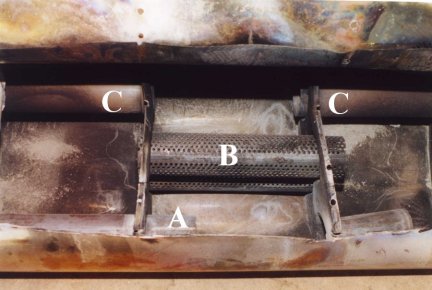|
|
|
Why are exhaust pipes fitted to our cars?
The purpose of the exhaust system is simple: to channel the fiercely hot products of fuel combustion away from the engine and the car's occupants and out into the atmosphere.
The exhaust system has a secondary purpose- to reduce the amount of noise made. The exhaust gases leave the engine at incredibly high speeds. Moreover, with the opening and shutting of the exhaust valves with each cycle of combustion for each cylinder, the gas pressure alternates from high to low causing a vibration- and hence sound. A very loud sound if there is no silencer there to reduce it!!!
As a population we are demanding less and less noise polution from our cars, so the 'powers that be' have legislated 'drive-by' noise regulations. To this end a silencer has to muffle the vibrations of the exhaust gases, reduce their velocity and thus reduce the amount of noise emmitted from the engines.
Too quiet?
Some would argue that modern cars are now too quiet. Well, sports cars anyway. Enthusiastic owners are often keen to hear a little more noise from their cars- a little more 'sporty' character if you like. This is reason enough for many to consider purchasing a 'sports exhaust'.
Potential power gains?
As mentioned above, the exhaust silencer is designed to muffle the exhaust gases and slow them down. In doing so, exhaust systems can cause a restriction to gas flow and effectively 'choke' the engine. There is a potential therefore for a sports exhaust manufacturer to put together an exhaust system that lets more gas out. As they are not concerned with the need to meet stringent manufacturer restrictions on noise, then all the better for putting a sports exhaust together- one less compromise to worry about!
Sports exhaust systems
Are all exhaust systems the same? No they are not. In fact there is a huge selection to chose from. Each sports exhaust system produces quite a different noise from another- from the low bassy noise associated with the Trevor Taylor Fxtreme and Pheonix, via the delightfully fruity Janspeed and Mike Satur Daytona to the higher pitched wail of the Miltek Supersports there is a system to suit everyone! Sports exhaust systems also vary according to HOW loud they are- the Trevor Taylor system easily being the loudest, to the most refined Double S system available through the MGOC. There are also differences in materials used in construction- mild steel versus stainless steel.This is usually reflected in the purchase price- a mild steel system usually being about 100 GBP less than the stainless steel equivalent. The advantage of stainless steel ofcourse is longevity. If you intend to keep your MG for a long time, then perhaps this is the material of preference. You may be interested to know, by the way, that the standard exhaust system is made of stainless steel...
How do exhaust silencers work?
The pictures below are of a Miltek Supersports exhaust system that Roger Parker cut open. Exhaust gases leave the engine and pass through the catalytic converter- that in itself will slow and quieten the exhaust quite alot (one reason why some choose to remove the catalytic converter!). From the catalyst, the gases turn through a lazy 90 degree turn and enter the silencer box through pipe (A) in the right hand picture. That middle chamber should be filled with wire wadding to dampen exhaust noise- but here the wadding had all but disappeared. This is a problem with stainless systems- although outwardly they look perfectly good, their silencing performance can drop off markedly over time.
Back to the plot. From pipe A, the gases cross the central chamber and pass into the right hand chamber (as you can see from all the soot). The gasses then pass from chamber to chamber equalising the pressure pulses via the perforated tube, B. The exhaust gases eventually exit via the tail pipes, C.
 SP Exhaust exposed! pictures courtesy of Roger Parker |
 |